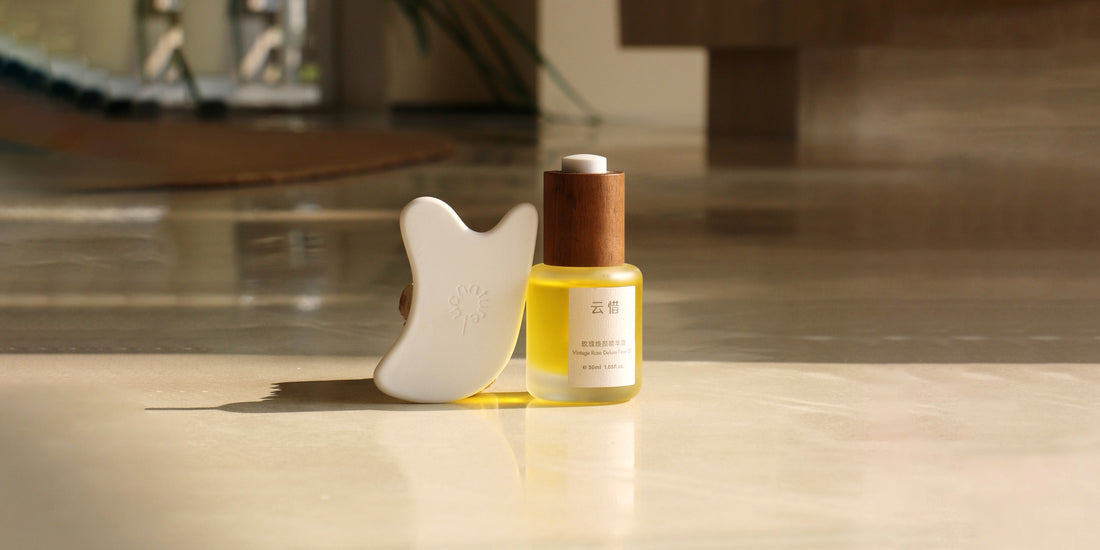
Gua Sha for Neck, Chest, Underarms — Lymphatic Drainage Tips | UCNATUREL
Share
If your gua sha routine stops at the jawline, you’re only using half the tool — and half the benefit. Facial gua sha is great for sculpting and de-puffing, but the real game-changer is following the flow: neck → chest → underarms. Those areas house major lymphatic highways and a lot of tension, both physical and emotional.
No, this isn’t a miracle cure. Yes, it helps. And yes, you can do it at home without sounding like a medieval apothecary. Below: a clear, safe guide to expand your ritual.
Why you should care: the neck, chest and underarms actually matter
- Neck: major lymphatic vessels run here — blockages mean facial puffiness and slower drainage.
- Chest & collarbone: a lymphatic junction that channels fluid from the face/neck to the body.
- Underarms: dense clusters of lymph nodes — think of them as your body’s little drainage stations.
Treating these areas helps your face look clearer and, more importantly, makes your upper body feel lighter. It’s self-care that behaves like work: low effort, measurable returns.
What you’ll need
- White Moonlight Gua Sha Tool (or any smooth gua sha with a comfortable curve)
- Vintage Rose Deluxe Face Oil
- A mirror, a towel, and 5–10 minutes
Full quick routine (5–7 minutes)
Prep
- Cleanse skin and pat dry.
- Apply 2–4 drops of oil to neck and chest; a little goes a long way. Too much = slipping, too little = tugging.
Step 1 — Neck (the priority)
- Direction: Always glide downward — from behind the ears toward the collarbone.
- How: Use the long edge of the gua sha. Start at the base of the skull, move along the sides of the neck, and sweep to the clavicle. Repeat 5–8 times per side with light pressure.
- Tip: Avoid pressing into the center throat (thyroid area).
Step 2 — Chest & collarbone (the junction)
- Direction: From center of chest outward toward each collarbone, then along the collarbone toward the shoulder.
- How: Use broad, soft strokes — 4–6 passes. Work any tender spots with micro-strokes, then redirect flow toward the underarm.
- Why: This helps move fluid from the face/neck into the body’s drainage pathways.
Step 3 — Underarms (the hidden outlet)
- Direction: From the inner upper arm → into the armpit → slightly upward toward the shoulder/side of chest.
- How: Very gentle, feather-light pressure. 6–10 small sweeps. Breathe while doing this — deep inhales and slow exhales help the nervous system relax.
- Tip: Keep skin taut with one hand while gua sha-ing with the other for smoother motion.
Safety & etiquette (AKA what most people don’t tell you)
- Pressure: Light. If you leave a bruise, you used too much force. Period.
- Frequency: 3–5 times per week is plenty for lymphatic care; daily is ok if very gentle.
- Sensitivity: Post-waxing, post-surgery, inflamed rash, sunburn, or active infection? Wait.
- Medical caution: If you have a diagnosed lymphatic disorder, breast condition, thyroid disease, or are pregnant (first trimester caution), check with your healthcare provider first.
Why oils matter (and which to use)
A good glide minimizes pulling and maximizes results. Use a lightweight botanical oil — our Vintage Rose Deluxe Face Oil is formulated for smooth glide without clogging pores. Essential oils can be calming (rose, frankincense) — but test on a small patch if you are fragrance-sensitive.
Quick FAQ
Q: Will gua sha ‘detox’ my body?
A: “Detox” is a buzzword. Realistically, gua sha supports lymphatic flow, circulation, and relaxation — that can feel like detox because fluid moves more efficiently.
Q: Can I use a regular stone or spoon?
A: Technically yes, but a well-designed gua sha tool fits contours better and reduces skin trauma.
Q: How soon will I see results?
A: Many feel immediate lightness or less puffiness; structural changes (tone, skin texture) appear over weeks with consistent practice.
